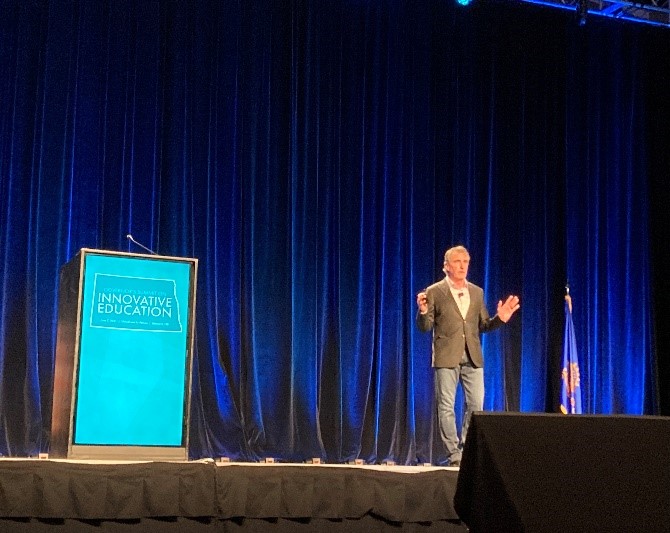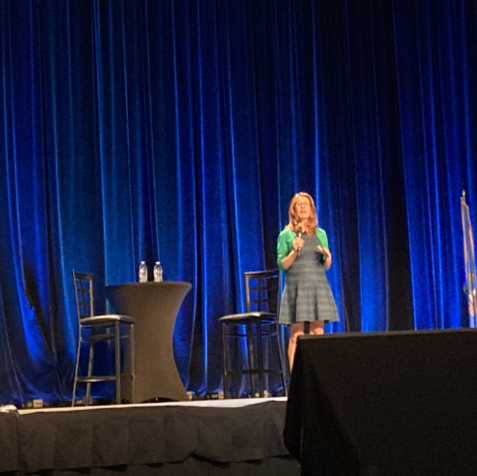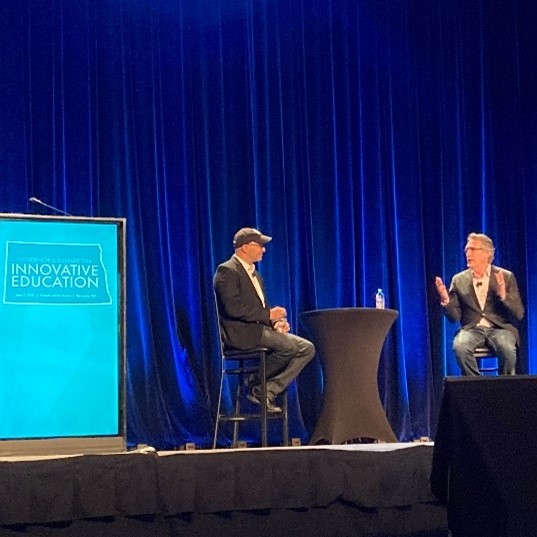As North Dakota redefines high school graduation requirements, school districts will be able to offer more personalized learning opportunities and ready students for career, college and life.
By Catherine Van Ness

As states plan their post-pandemic recovery, many are exploring ways to reimagine the status quo and ensure that they meet students’ academic and mental health needs. Education leaders are rethinking “business as usual” while planning how to spend historic levels of funding. These unprecedented circumstances call for unconventional solutions.
The 5th annual Governor’s Summit on Innovative Education was held in a hybrid format this year. On June 7, many education professionals, parents and other stakeholders gathered in Bismarck, while more than 900 participated online. The keyword of this year’s summit was “gratitude”—for the workforce that allowed students to attend school in-person for much of the 2020-21 year and for those who have inspired innovation in the field, such as the five #InnovativeND Award recipients.

In his opening remarks, Governor Doug Burgum celebrated some key wins coming out of the recent legislative session, which adjourned on April 30. A central component of North Dakota’s vision of innovative education was passed this year in SB 2196. This legislation allows school districts to replace the typical high school graduation requirement model based on specific courses measured in Carnegie Units with a mastery framework. In practice, this means that student learning will not solely be restricted to a classroom but can include other experiences that allow students to master key competencies.
North Dakota’s Portrait of a Graduate identifies seven key competencies that all high school graduates should have mastered through their education: adaptability, collaboration, communication, critical thinking, empathy, learner’s mindset and perseverance. As part of the process of building a mastery framework, local districts can work with the community to build their own Portrait of a Graduate and align students’ work to demonstrate proficiency in those skills. At high school graduation, students will have a portfolio of evidence to support their diploma attainment.
A high school transcript without any grades or GPAs may be hard to imagine, but Gov. Burgum is no stranger to new innovations as the former CEO of Great Plains Software. As he charged summit attendees, the education sector should have high expectations of the investment the state makes in public education and not become complacent with having a good-enough system.
The summit’s morning keynote address, delivered by Ron Berger, senior advisor for Teaching & Learning at EL Education, focused on encouraging students to do “beautiful work.” Starting in elementary school, students can receive critiques of their work to improve over an iterative process and reach their full potential, far beyond their first draft.

The afternoon keynote address, delivered by Dr. Stuart Ablon, the director of Think:Kids in the Department of Psychiatry at Massachusetts General Hospital, told attendees that students with challenging behavior “lack skill, not will.” Through Collaborative Problem Solving, educators and students can build the skills to tolerate stress and self-regulate while building positive relationships. This will be critical after students were exposed to higher levels of stress and uncertainty during 2020.
State Superintendent Kirsten Baesler echoed the importance of social-emotional learning paired with providing support to schools to accelerate unfinished learning. She also celebrated North Dakota’s successes, highlighting that they are the first state to have integrated computer science and cybersecurity standards for K-12, a critical subject for students to grasp in the 21st century.

As a member of Governors for CS, Gov. Burgum has long recognized the importance of computer science education and access to programs that teach students to code. To close out the day, he sat down with Hadi Partovi, founder and CEO of Code.org. Both men commented that the number of open computing jobs currently outpaces the number of students graduating with the necessary skills to fill these high-paying positions. Gov. Burgum also emphasized the importance of students accessing computer science education at a young age to help reduce disparities in representation among adults in STEM careers.
At NGA’s Summer Meeting in 2016, many governors joined youth in a coding activity led by Code.org. Since then, more states have endeavored to increase access to computer science, with 20 states requiring high schools to offer computer science education. Now, many states are primed to expand access to computer science courses with devices in the hands of 94 percent of students and many more teachers becoming familiar with various technological platforms during the past year of remote learning.
To build on summit discussions, NGA looks forward to working with Governors and state education experts to support the coordination of social-emotional learning efforts with workforce readiness competencies.













